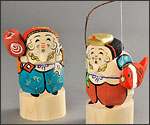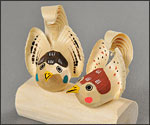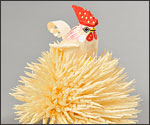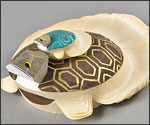Sasano-bori Curving (Yonezawa City)
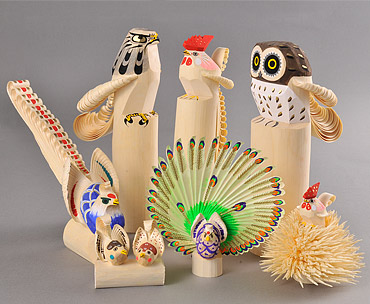
History/Outline
The farmers' carving technique of using only a single knife has been passed down for several thousand years
This is a local type of toy passed down in the Sasano district since a long time ago. It originates from two items: a shaved wooden flower and an octagonal charm. It is said that they are closely connected with rituals of the
local Sasano Kannon belief. Also, during the late Edo period (18th to 19th century) the 9th lord Uesugi Yozan of the Yonezawa clan is said to have encouraged farmers to make them as a side business during the winter season, helping bring
about their prosperity. In technical terms, there is a similarity to Inau carvings of the Ainu people (indigenous Japanese) which are said to be used in festivities.
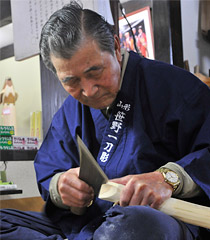
Techniques/Characteristics
Bold, sensitive and simple, Sasano-bori are hand-made wooden carvings representative of Japan.
The head, wings and tails are produced using Koshi-abura wood and a Sarukiri knife, then finished by painting using poster colors. A representative work is the Otaka-poppo, a charm signifying business prosperity. Its name was
partly borrowed from the name of Lord Yozan (Yo means Taka or hawk). At Sasano Mingeikan there are exhibitions, product sales and hands-on experience schools for painting Sasano-bori carvings.
Main Products
●Ebisu Daikoku (a god of business prosperity) ●Fukura Suzume (a sparrow said to invite happiness) ●Flowers ●Birds ●Turtles
